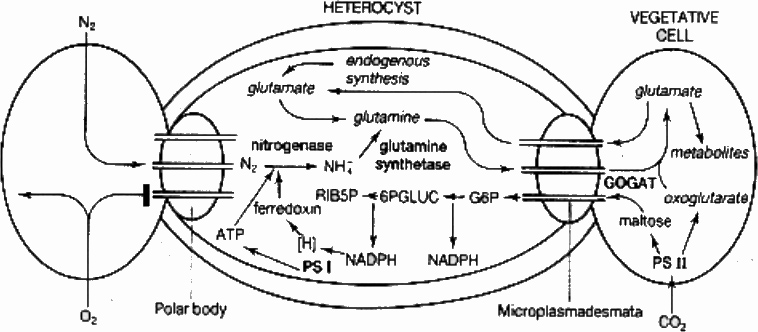

Diagrammatic representation of carbon and nitrogen exchange between the heterocyst and vegetative cells. The heterocyst of filamentous cyanobacteria is the site of nitrogen fixation. The heterocyst lacks photosystem II activity, which prevents the formation of oxygen in the vicinity of the oxygen-labile nitrogenase, but also prevents carbon fixation. Conseguently carbon compounds, possibly in the form of disaccharides such as maltose, must be provided from the vegetative cell in order to supply the necessary reductant (NADPH) via the oxidative pentose phoshate pathway enzymes (glucose 6-phosphate and 6-phosphogluconate dehydrogenases). The ammonia produced by nitrogen fixation is used to form glutamine through condensation with glutamate by the enzyme glutamine synthetase (GS). The glutamate is generated either by endogenous synthesis or by transport from the vegetative cell. In return the glutamine is transported back to the vegetative cell, where it forms glutamate via glutamate synthase (GOGAT). The heterocyst and vegetative cell thus demonstrate an early evolved form of cellular specialization and a division of labour of the type normally associated with higher plants and animals.